Each year we have science-focused graduate students complete fellowships in K-12 outreach. The KBS Science Education Fellows coordinate the K-12 Partnership workshops, plan and assist with field trips on a variety of topics at KBS, on MSU’s main campus and within our community and local K-12 schools. This opportunity is funded by MSU’s Graduate School.
For the 2018-19 academic year, Meredith Zettlemoyer and Sean Griffin are the KBS Science Education Fellows. Let’s learn more about them and their areas of research!
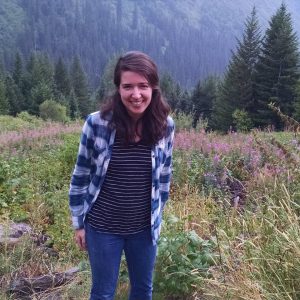 Meet Meredith…
Meet Meredith…
The adder’s fork fern. Winged loosestrife. Nodding lady’s tresses. They sound like the witch’s list from ‘Macbeth’, but these are just three of the many native plant species that have disappeared from Kalamazoo County, MI, due to human activities. In fact, human-caused pressures such as land use and climate change have resulted in the extinction of anywhere from 13-23% of plant species across the globe. Why do we have such a limited grasp of what drives species losses?
Biologists have a general idea of what causes species to disappear from an area. In particular, land use and climate change are considered major drivers of species declines. But land use and climate change might refer to variety of things: fertilizer use results in high amounts of nitrogen in soil, hunting has contributed to exploding deer populations, and temperatures are rising across the globe. Each of these changes potentially contributed to species losses in the past, and they pose a possible threat to rare species in the future. Species also possess certain characteristics that might make them more vulnerable to disappearing over time. For example, plants with really nutrient-rich leaves are more likely to be snacked on by deer, causing those plant populations to decline. Knowing what these characteristics are could help us identify the most at-risk species. In my research, I use experimental tests of multiple changes and examine species characteristics to understand the role of different forms of land use and climate change in species losses. Currently, I am investigating the influence of nitrogen fertilization, deer herbivory, and rising temperatures on population declines of rare, native prairie wildflowers. I hope that this work will help us better predict the impacts of future global changes on plant species’ survival. Preserving species will help us maintain healthy native ecosystems, let us better predict future extinction risk of threatened species, and protect some of the rare species that used to be found in our backyards.
I attended the University of Virginia, earning a BA in Biology and English, and have worked as a science camp counselor, as a naturalist with the AmeriCorps volunteer program, and in environmental policy with the Southern Environmental Law Center. I’m excited to be a K-12 fellow this year, to learn more about environmental education and help bring ecology into the classroom!
Check out Meredith’s website for more information or contact Meredith by email!
Meet Sean…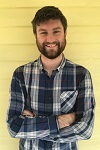
When you are shopping for a new house, what do you look for? Do you care most about the neighborhood, or is the appearance and size of the house itself more important to you than the surroundings? Maybe you take the distance to the nearest grocery store into account, or perhaps want a home with a nice backyard and garden?
It may surprise you, but wild bees may make similar decisions when choosing new homes!
Bees and other pollinators are responsible for pollinating up to 90% of the world’s flowering plants, but many species are declining across the world due to human impacts such as the destruction of natural habitats. To conserve this important group, non-profit organizations, governments, and concerned citizens are increasingly planting native plants and restoring pollinator-friendly habitat. However, we know little about how wild bees colonize new habitats and whether our current restoration efforts are sufficient for reinstating diverse, healthy bee communities. For example, do bees pick nests based on aspects of the nest themselves, or based on some landscape factor such as location or distance to food resources? To create the best possible habitats for wild bees, we need an understanding of the colonization process and how bees decide where to create new nests.
As a conservation biologist in the Haddad lab at the Kellogg Biological Station, the goal of my research is to find ways to make restored habitats better for wild bees. To do this, I study bee colonization and the effects of restoration on bees at three main study sites. In South Carolina, I use a set of experimental landscapes to test the effects of fragmentation, habitat shape, and habitat corridors on bee movement and colonization. Here at the Kellogg Biological Station in Michigan, I study the effects of floral resources and landscape context on bee nesting patterns across the agricultural Long Term Ecological Research plots (LTER) and a set of experimental biofuel plantings (GLBRC). Finally, I’ve spent six years working at a beautiful tallgrass prairie restoration run by The Nature Conservancy in Illinois, the Nachusa Grasslands, studying the effects of restoration on bee community composition and population genetics in real-world fragmented landscapes. Together, this research will inform the creation of new pollinator-friendly habitats and help restoration practitioners prioritize certain types of restoration management for bees.
I am passionate about sharing conservation knowledge with the public and teaching people how they can protect pollinators in their own backyards! I’m super excited to be one of the KBS Science Education and Outreach Fellows this year, so I can learn how to communicate about ecology and share my love of insects with kids and adults in the community outside KBS. You can learn more about my work and outreach at www.srgriffin.com and the Haddad lab website www.nickhaddadlab.com, or email me.
More photos coming soon!

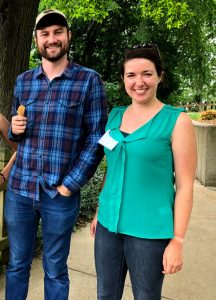
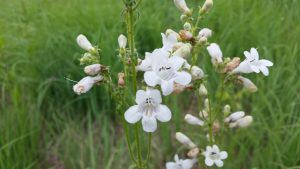
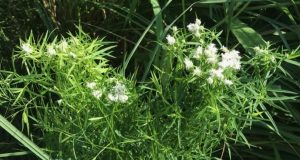

A legacy of conservation; a commitment to sustainability.
3700 E. Gull Lake Drive
Hickory Corners, MI 49060
(269) 671-5117
info@kbs.msu.edu